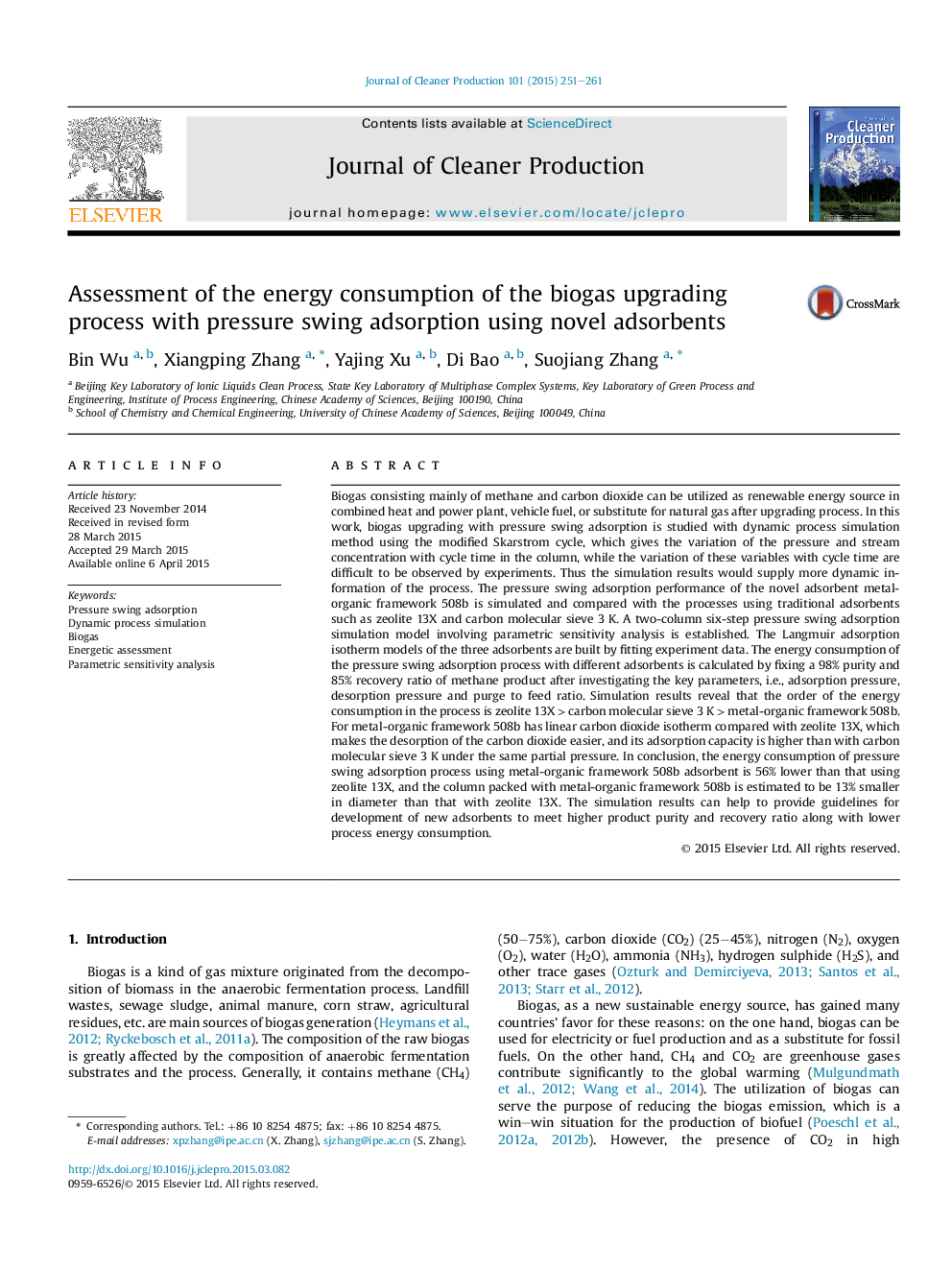| Article ID | Journal | Published Year | Pages | File Type |
|---|---|---|---|---|
| 1744596 | Journal of Cleaner Production | 2015 | 11 Pages |
•Pressure swing adsorption simulation is conducted with modified Skastrom cycle.•The fitted isotherm of the novel adsorbent agrees well with experiment data.•Sensitivity analysis of the key variables in the process is performed.•The energy consumption using three adsorbents is compared.•The metal organic framework material has the lowest energy consumption.
Biogas consisting mainly of methane and carbon dioxide can be utilized as renewable energy source in combined heat and power plant, vehicle fuel, or substitute for natural gas after upgrading process. In this work, biogas upgrading with pressure swing adsorption is studied with dynamic process simulation method using the modified Skarstrom cycle, which gives the variation of the pressure and stream concentration with cycle time in the column, while the variation of these variables with cycle time are difficult to be observed by experiments. Thus the simulation results would supply more dynamic information of the process. The pressure swing adsorption performance of the novel adsorbent metal-organic framework 508b is simulated and compared with the processes using traditional adsorbents such as zeolite 13X and carbon molecular sieve 3 K. A two-column six-step pressure swing adsorption simulation model involving parametric sensitivity analysis is established. The Langmuir adsorption isotherm models of the three adsorbents are built by fitting experiment data. The energy consumption of the pressure swing adsorption process with different adsorbents is calculated by fixing a 98% purity and 85% recovery ratio of methane product after investigating the key parameters, i.e., adsorption pressure, desorption pressure and purge to feed ratio. Simulation results reveal that the order of the energy consumption in the process is zeolite 13X > carbon molecular sieve 3 K > metal-organic framework 508b. For metal-organic framework 508b has linear carbon dioxide isotherm compared with zeolite 13X, which makes the desorption of the carbon dioxide easier, and its adsorption capacity is higher than with carbon molecular sieve 3 K under the same partial pressure. In conclusion, the energy consumption of pressure swing adsorption process using metal-organic framework 508b adsorbent is 56% lower than that using zeolite 13X, and the column packed with metal-organic framework 508b is estimated to be 13% smaller in diameter than that with zeolite 13X. The simulation results can help to provide guidelines for development of new adsorbents to meet higher product purity and recovery ratio along with lower process energy consumption.
